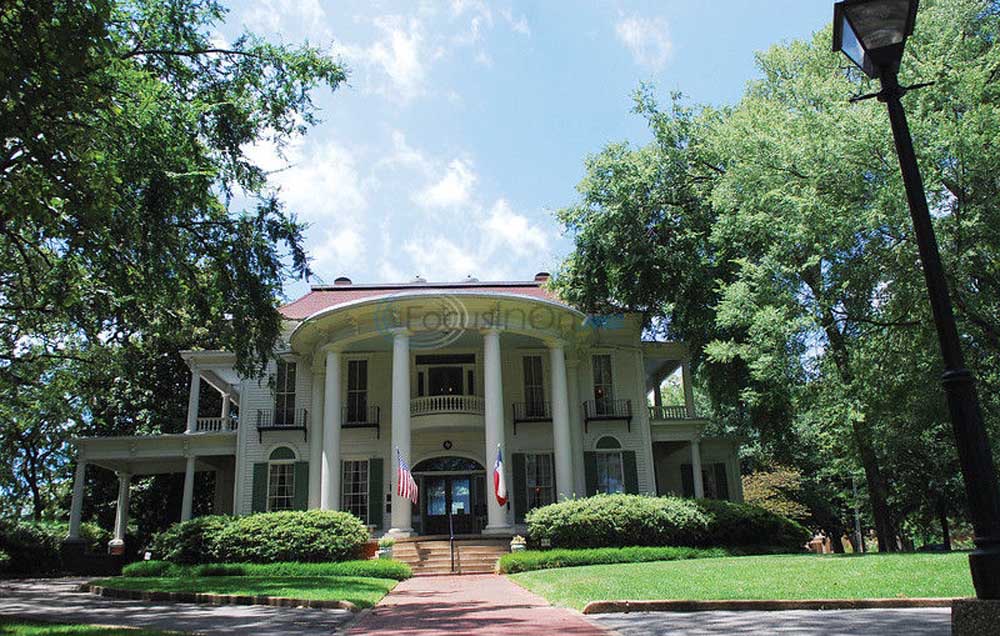Museum offers more than just dusty artifacts
Published 10:50 pm Sunday, July 26, 2015
The massive Goodman-LeGrand House was not always so stately. Multiple renovations over the span of more than 70 years brought the home from a simple single story, four-room house to the beautiful two-story estate now known for its pillars and the beautiful park grounds surrounding it.
The modestly sized Goodman home was built in 1859. The original owner, Samuel Gallatin Smith, referred to it as Bonnie Castle. When the Civil War began in 1861, Smith sold the home and went to war for the Confederacy. He died in battle in Louisiana.
Trending
The next owner held onto the home for five years before selling it to a retired doctor, Samuel Adams Goodman. A year later, Samuel Adams Goodman sold the home to his son, Dr. William Jeffries Goodman, a celebrated Civil War surgeon.
The influence of the two doctors is apparent in the museum. The main hall boasts an impressive collection of medical and surgical books, with handwritten notes about procedures. Just a few feet away, in the meeting room, tools and various medical supplies, some dating from the Civil War, can be found in display cases.
The last owner of the home was Sallie Goodman-LeGrand, who bequeathed the entirety of the property to the city.
“When she died, she gave the city of Tyler the land, the house and everything you see inside the house and museum,” Museum Curator Mary Foster said. “Now the land you come in on is a public park.”
The museum is open to the public from 10 a.m. to 4 p.m. Tuesday through Saturday, and the park is open from 8 a.m. to 5 p.m. daily. Both are available for various types of events, including weddings in the park.
Foster currently is preparing for the museum’s annual fundraiser, which this year is themed a “Mad Hatter’s Tea Party.”
Trending
The museum is home to a large collection of antique china, including many tea sets. Mrs. Foster said the last three generations of Goodman and LeGrand women collected china.
“Our former director, Patricia Heaton, was in (a storage closet) and she was cleaning up and discovered a blank (piece),” Mrs. Foster said. “It has the exact same stamp on the back of it (as the current display set). Sallie mentioned in her journals that she had painted china; it’s almost as if she was saying, “I told you I painted that.”
Another point of interest in the museum is a section upstairs dedicated to a former slave, Cely Lipscomb, affectionately referred to as “Aunt Cely,” and her descendants. She spent most of her life working for the Goodman family, even after being freed at 67 years old, according to her great-great-grandson Judge Quincy Beavers Jr.
Beavers said his grandmother grew up around the property as well.
“Grandma Cely worked there until she was 100, so my grandmother used to come and visit. She played in the backyard, in the house and on the stairs.”
Much of the house and family’s history comes from diaries kept by the last owner, Sallie Goodman-LeGrand.
“There’s definitely a parallel between (Beaver’s) family and this family,” Mrs. Foster said. “Most of the time with homes in the south, they aren’t written about, and we don’t get to see their history.”
One excerpt from Sallie’s diary, dated June 17, 1905, accompanies a photo on the second floor. In the photo, Sallie poses with “Aunt Cely” during one of her semi-annual visits to the family. The entry describes how, in 1902, Cely stood at Samuel Goodman’s bedside as he passed away and then later sat near the head of his grave as he was buried.
The two seemed to share an exceptionally close relationship. The diary even mentions that Goodman included her in his will to ensure she was taken care of in her old age.
Cely would pass away a year later, at 110 years old. She had seen three centuries, been a slave and then a free woman and shared 72 years of friendship with Dr. Samuel Goodman.
Mrs. Foster said these displays of love and affection for those considered family isn’t uncommon in the museum.
One passage from Sallie’s diary that hits home for Foster is an intimate look at Sallie’s feelings after a trip to Mineral Wells did nothing to help her dying sister.
“They say the water has healing power, but I say it’s poison,” Sallie wrote.
“She was becoming bitter because her sister wasn’t getting better,” Mary said of Sallie’s experience. “That, to me, that’s the gritty humanity that you see in this family. You don’t get to see that a whole lot in these prestigious families.
“They were tender. Families were allowed to love each other and they showed it. Before, it had been very stoic — you don’t coddle your children. After the Civil War, people wanted to go back to, ‘we’re close, we’re family and I’m allowed to show that I love my children.’ This family knew how to do that.”
For more information about the Goodman-LeGrand House and Museum, call 903-531-1286.
Twitter: @TMT_Cory







